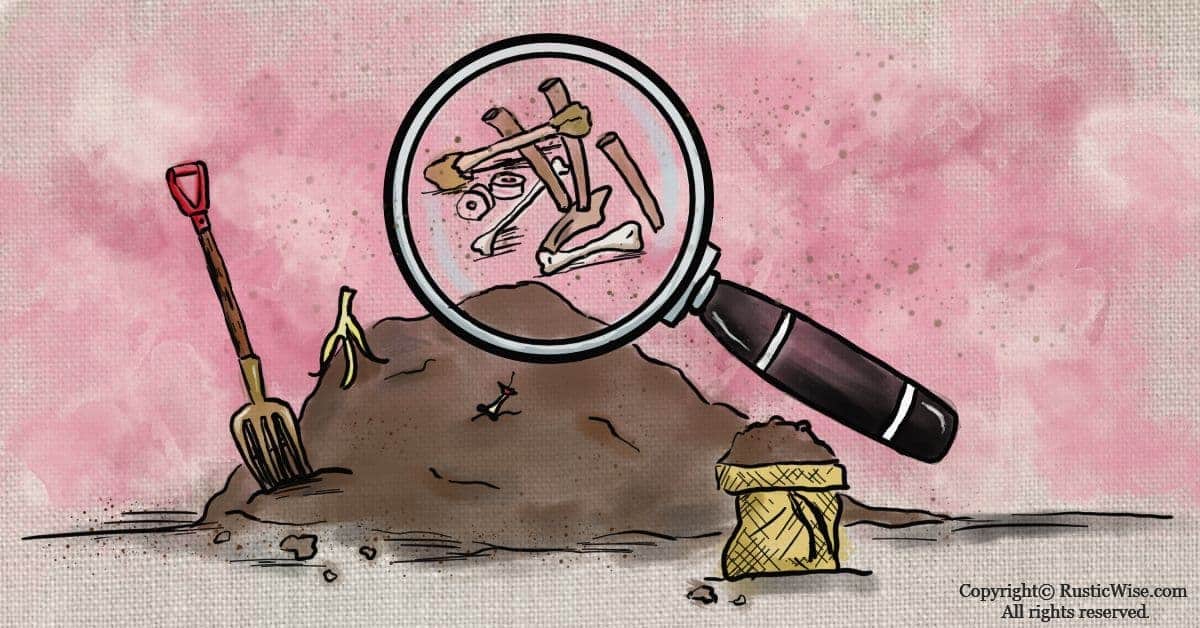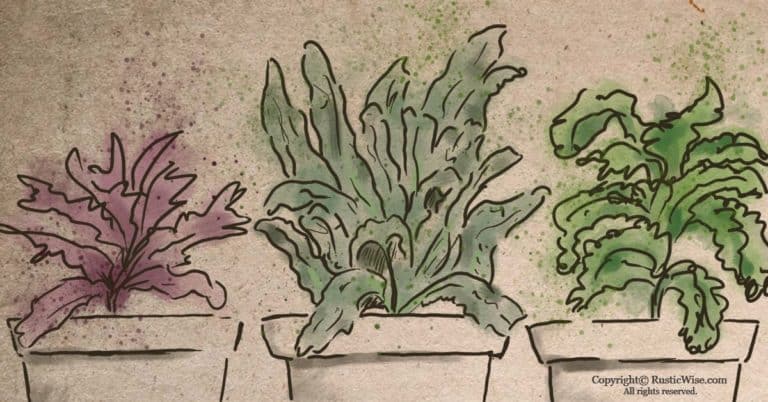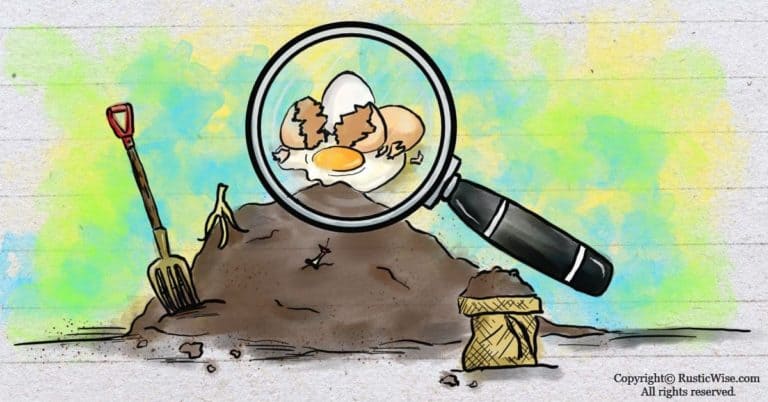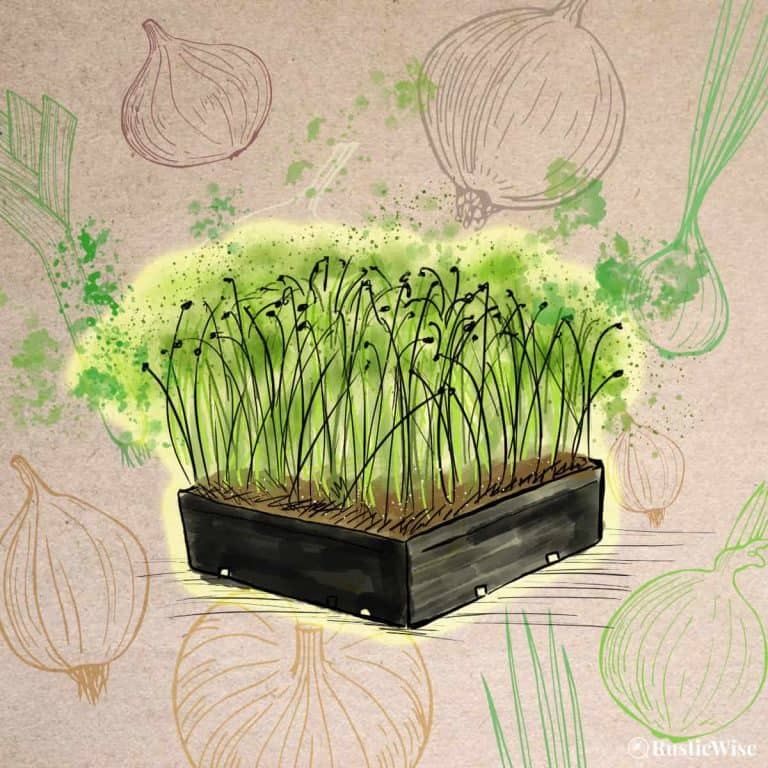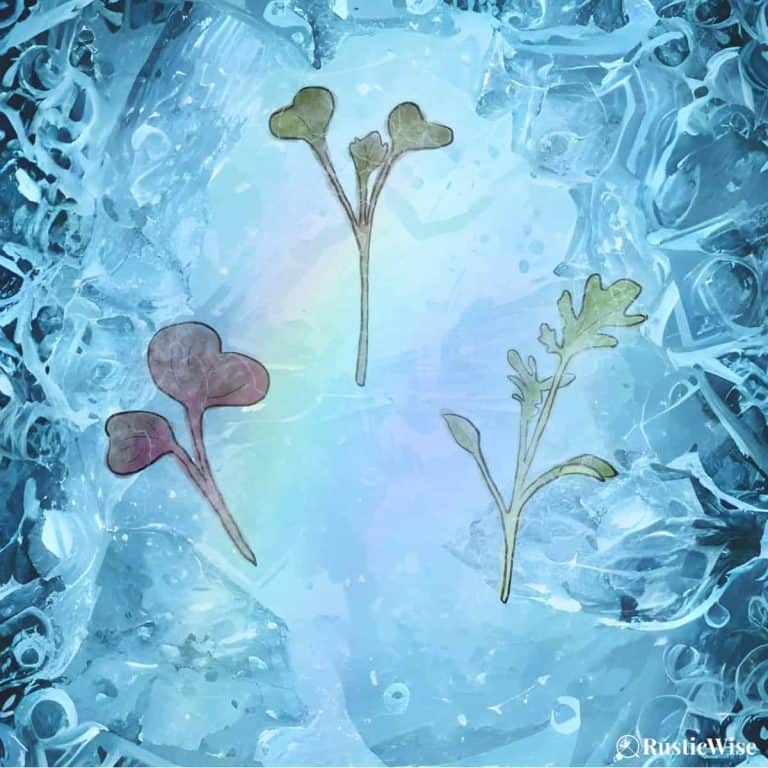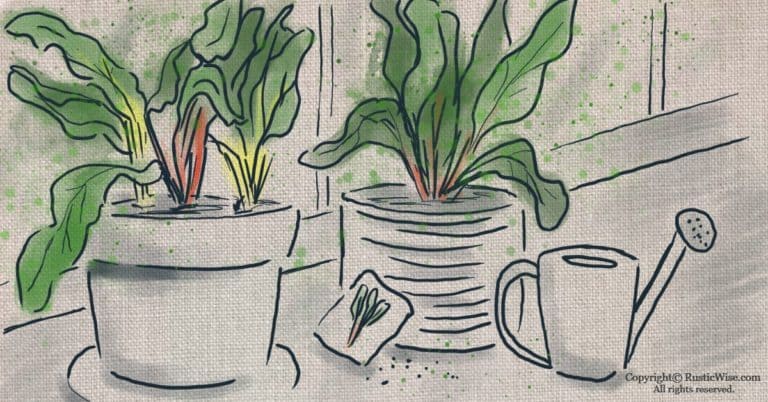Can You Compost Bones? Here’s the Nitty-Gritty
If you have your own backyard compost, you might be wondering, can you compost bones? Yes, you can safely compost bones IF you take a few preliminary steps first, namely: boil the bones to remove excess meat, oven bake (to turn the bones brittle), and crush. Animal bones from food waste fall under a “gray” area in the composting world. Many composting guides don’t recommend composting animal products for fear of attracting pests and creating strong odors. (This is especially true if you have a small, uncovered compost pile.)
I was curious as to how to compost bones as I have a backyard compost bin. I received a cooked goose (which of course had leftover bones). I conducted my own composting experiment which I’ll share with you below. This method will also work for composting chicken bones or other types of animal bones you have on hand.
Read on to learn how to safely add bones to a backyard compost without creating a huge stink.
Why most people don’t recommend composting bones
If you take a look at most home composting guides, most don’t recommend adding animal byproducts, including meat, dairy, and bones to the average compost.
For example, the U.S. Environmental Protection Agency (EPA) does not recommend composting meat, bones, fish bones, and animal scraps as it may, “create odor problems and attract pests such as rodents and flies.”¹
This is mostly true: adding meat and bones to the average backyard compost pile may create more trouble than it’s worth.
This is because many backyard composts are of the “passive” variety, meaning you add a variety of food scraps once in a while, and let it sit while nature runs its course.
If you have a passive compost, it’s most likely a “cold” compost, which means the pile’s overall temperature remains cool, and the rate of decomposition is slower. If you add bones to this type of compost pile, the bones will take a long time to decompose (maybe years!), and in the meantime, could cause quite a stink.
If this applies to the type of compost you have at home, pause before adding bones to the pile.
On the other hand, the University of Georgia says, “Items such as red meat, bones and small amounts of paper are acceptable, but they take longer to decompose. Add red meat and bones to only a well-controlled compost pile to avoid attracting vermin, pests and insects to partially decomposed meat scraps.”²
So, if you have a thriving, hot compost pile, the rate of decomposition is much quicker. You’re probably adding new compostable material frequently and regularly turning the pile. This helps to aerate, mix, and allows bacteria to break down components quickly.
With hot composting, it’s safer to add bones. But, they’ll still take a long time to fully decompose before you can use your batch of finished compost.
So, to break down bones more quickly, it’s important to take a few extra steps first which we’ll explain below.
Takeaway: Don’t add bones, raw meat, cooked meat, or meat scraps to a compost (especially if you have a cold or passive compost heap), before first taking a few extra steps—see below. Bones may create a strong odor, attract unwanted backyard pests, and just take a very long time to decompose.
Why compost bones?
If you haven’t jumped on the composting bandwagon yet, now’s the time to do so. Organic waste and food waste is a huge problem. Composting not only diverts food and yard waste from landfills, it also creates a nutrient-rich soil amendment for your garden.
Besides, instead of spending money on buying bone meal which acts as a natural fertilizer, you can simply learn to compost chicken bones, or other leftover bones by grinding them up first.
Bones are a source of calcium, carbonate, collagen, and phosphate.³
In particular, raw bone meal provides a source of nitrogen. (While bones also contain phosphorus, most of it is not soluble.) According to Alabama A & M & Auburn Universities, steamed bone meal increases the amount of available soluble phosphorus for plants (but slightly decreases the amount of nitrogen available). Steamed bone meal contains about 20 percent calcium.⁴
In the composting world, nitrogen serves as a source of nutrients for the microorganisms and other helpful insects in a compost pile.
Calcium carbonate helps to build strong cells in plants and is a vital part of healthy cell development in plants. All in all, bones provide an excellent source of nutrition for plants.
What kinds of bones can you compost?
Many different types of animal bones can be composted (provided you prepare the bones first which we’ll cover in the next section).
- Beef bones
- Chicken bones
- Fish bones
- Pork bones
- Wild game bones
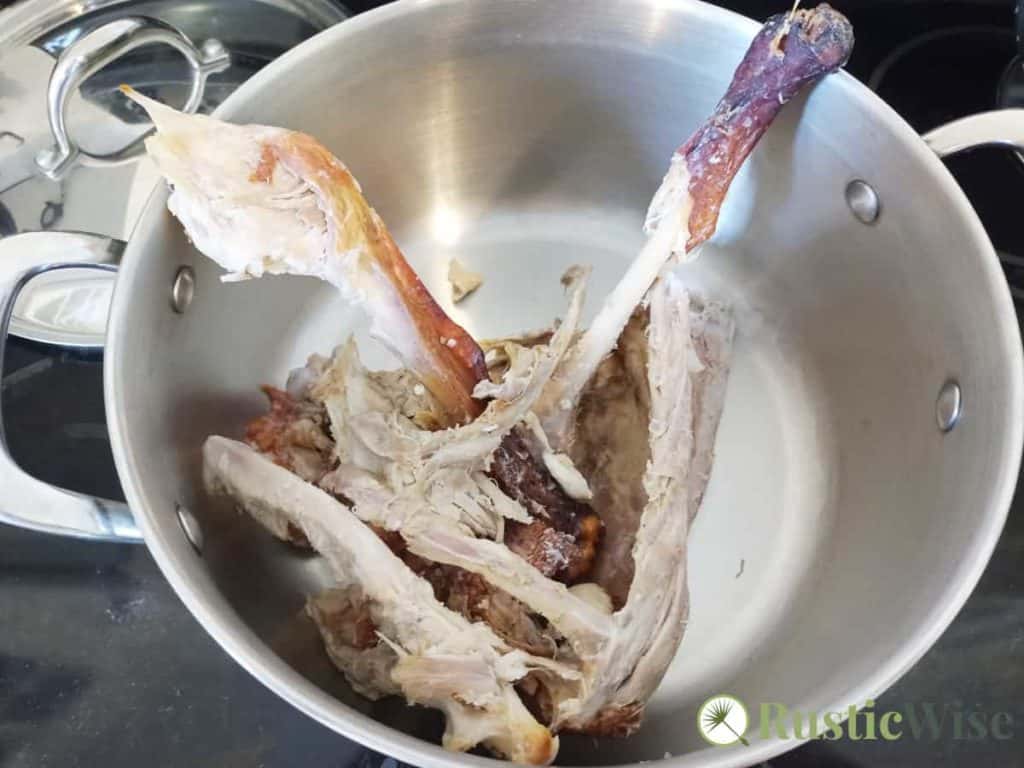
Can you compost bones? Yes, here’s how
Will composting bones attract unwanted critters like flies and beetles (and potentially ruin an otherwise healthy compost heap)? We decided to test out this method on some leftover goose bones.
(While we used goose bones, we later tried this with leftover pork bones which also worked). So, whether you have cooked chicken bones, goose, pork, or otherwise, this method should work.
In a nutshell, the process involves boiling the bones with water until they became soft enough to break apart easily. Then, we baked them at 400 degrees Fahrenheit for about 30 minutes. After baking, we crushed the bones into smaller pieces using a mallet.
When you pre-process bones before adding to a compost, it makes them unattractive to pests. You’re essentially cleaning the bones and crushing them into small pieces. This helps by removing any leftover meat, cartilage, and seasoning (which would make a tasty snack for backyard critters), and breaking into small pieces to speed up decomposition.
You’ll need:
- Large stockpot and wooden spoon
- Baking sheet
- Something to crush the dried bones with such as a mallet, rolling pin, or mortar and pestle
Let’s get started!
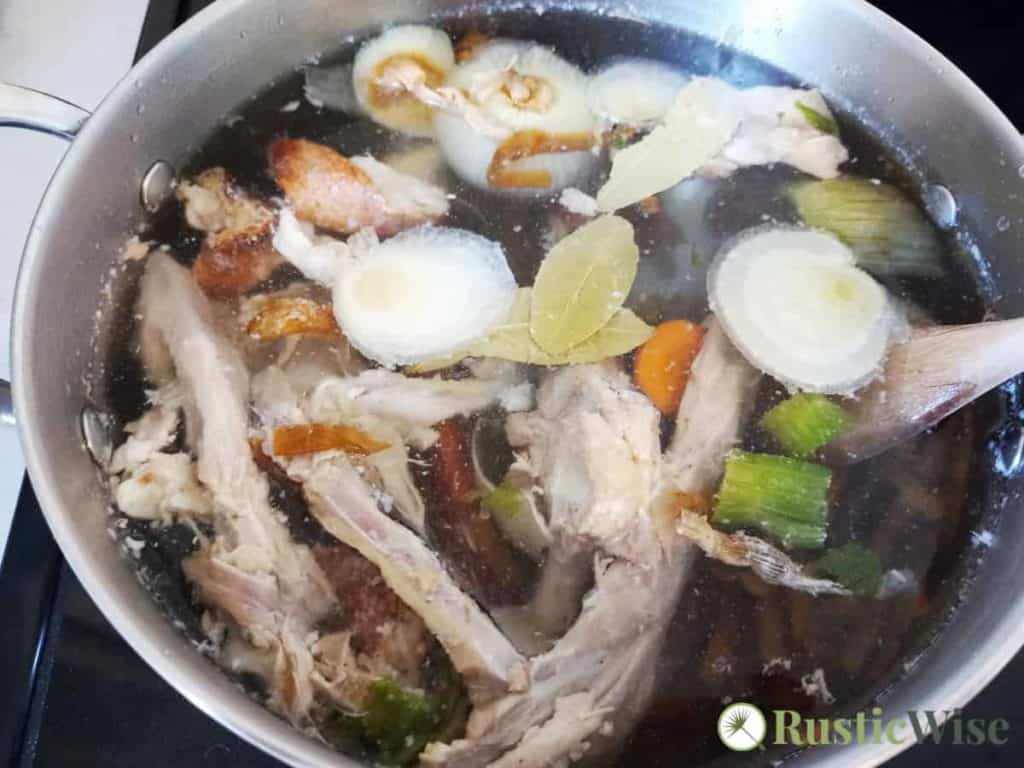
Step 1: Boil the bones
This first step involves boiling the bones to soften them; this also helps to clean them by removing any leftover meat, cartilage and flavoring.
As you may know, store-bought bone broth sells for a pretty penny at farmer’s markets and grocery stores. It’s a nutritious stock that’s brimming with collagen. Why not make your own broth while you’re at it?
Now, if you really want to make a proper bone broth, you’ll need to boil bones for hours. However, if you don’t have that much time, boiling the bones anywhere from 30 to 60 minutes (depending on the amount and size of bones) should suffice for cleaning and softening them for composting.
So, here’s what you do:
- Throw those leftover bones into a large stockpot. Fill with enough water to completely cover the bones, and add any herbs, spices or seasonings (optional if you’re hoping to keep the broth). I like to throw in leftover vegetable odds and ends which we save in the freezer just for this purpose—to season soup stocks.
- Bring to a boil. Leave at a vigorous boil for 30–60 minutes. Stir occasionally.
- Allow to cool and remove bones.
- Pat dry.
After boiling, the bones are clean and free of any leftover meat or cartilage.
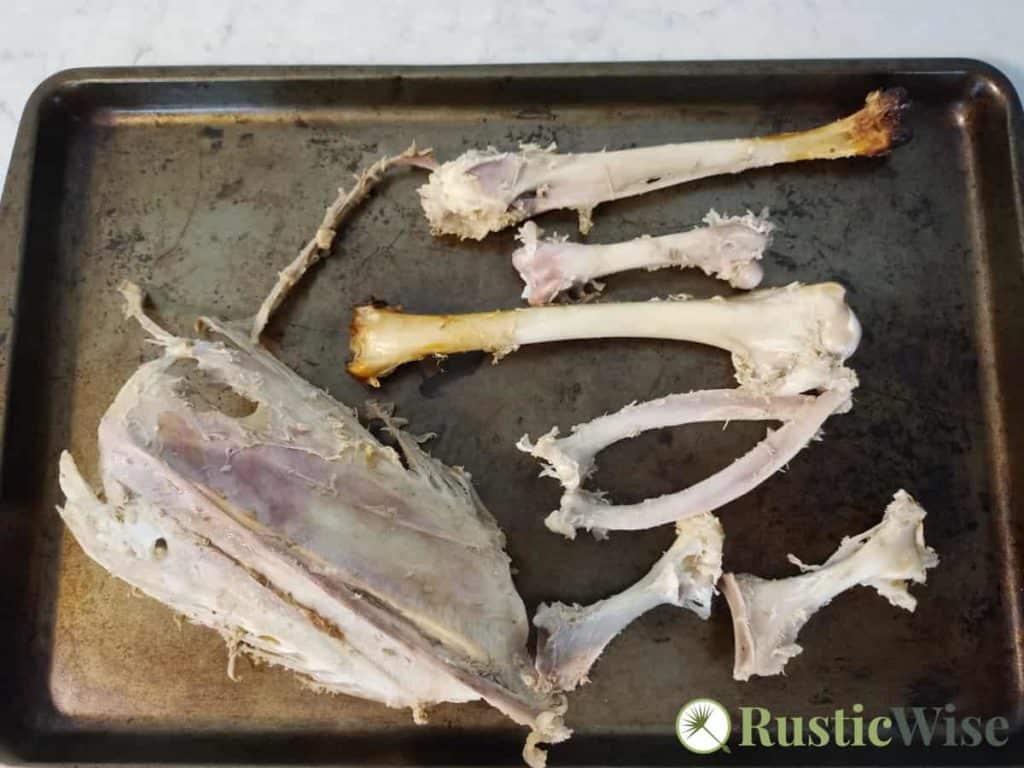
Step 2: Bake the bones
The second step involves drying the bones and making them brittle enough to easily crush into smaller pieces.
- Preheat oven to 400 degrees Fahrenheit (204 degrees Celsius).
- Place bones in a single layer on a baking sheet.
- Bake for approximately one hour (or until bones are completely dry and brittle). Begin checking on the bones after 30 minutes for signs of browning. Depending on the size and amount of bones you have, you may need to bake for longer. Our duck bones were completely dried and brown after 30–40 minutes.
- Remove from oven once dry and allow to cool.
You know the bones are done when they easily crumble and are completely dried.
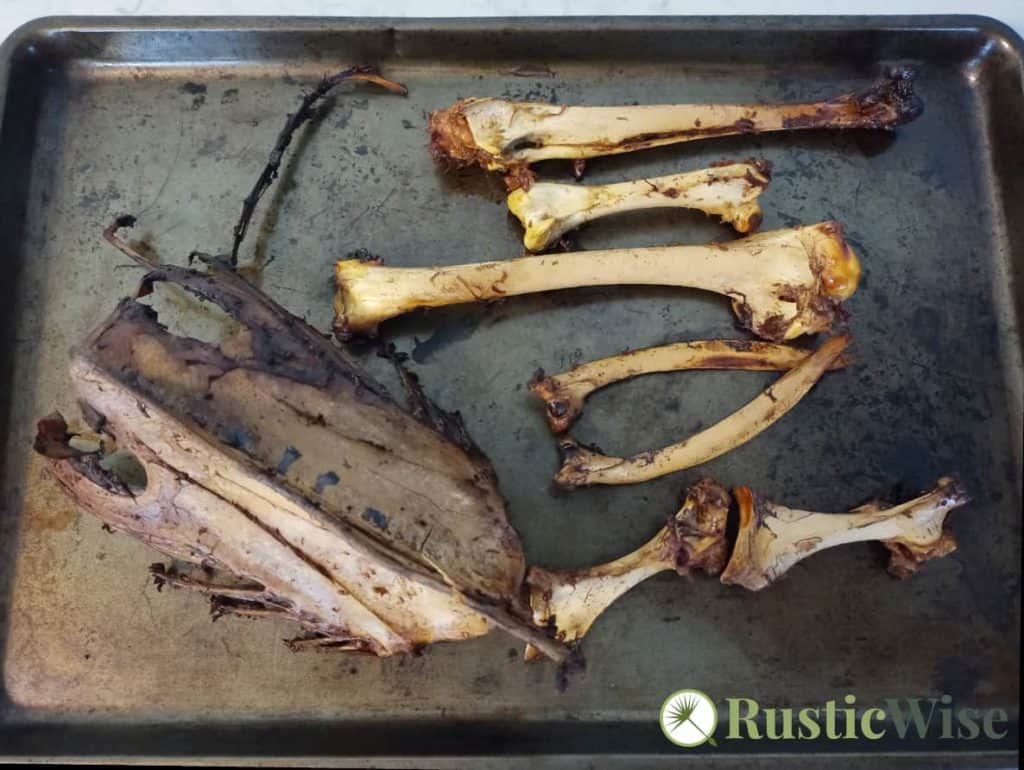
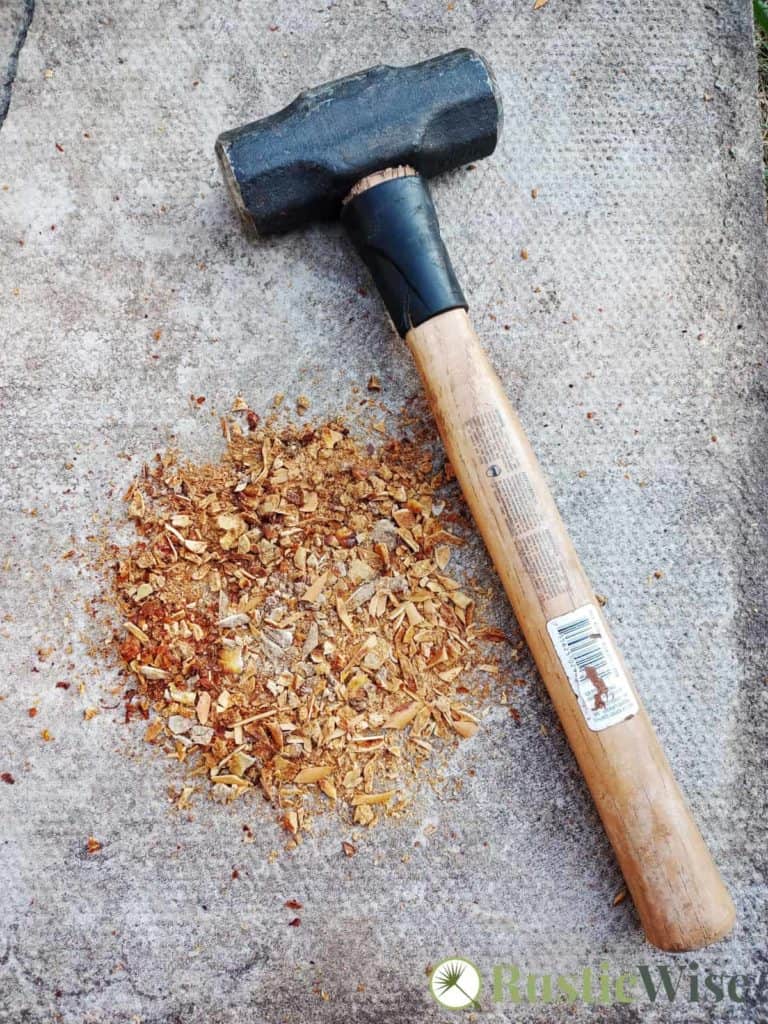
Step 3: Crush the bones
The main goal here is to avoid leaving big pieces which take longer to decompose. There are several ways you can do this. You could use a mortar and pestle if you’re working with smaller bones. Or, you could use a rolling pin.
What we found worked well (and was pretty satisfying!) was using a mallet and smashing them outside.
If you want to take this a step further and grind the bones into a fine powder to make bone meal fertilizer, you could do that now. If you grind the bones into bone meal, you can add it directly to soil as a natural fertilizer and skip the composting process altogether.
The bottom line: It really doesn’t matter what you use to crush the bones so long as they are all in small pieces. This allows the fragments to break down more quickly in a compost pile.
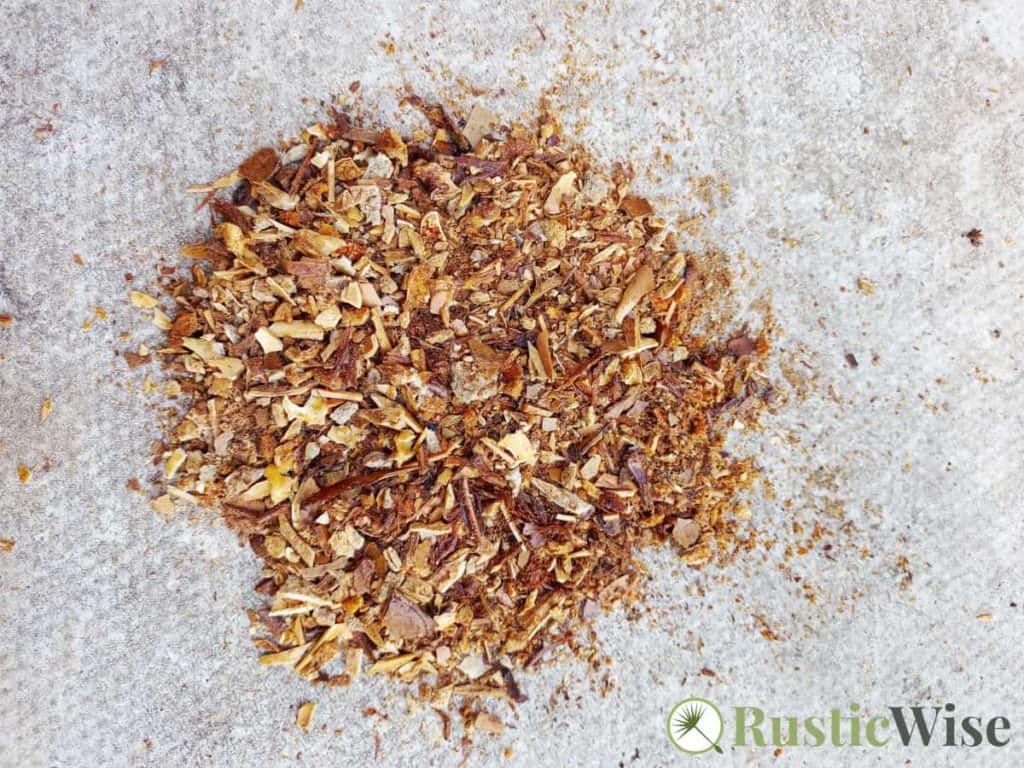
Step 4: Add to compost
Now that you’ve properly prepared bones by boiling, baking, and crushing them, it’s time to add them to your compost!
When adding something new to a compost pile (especially something that’s more difficult to break down, such as cooked bones), it’s best to add to the center of the pile. The middle of a compost pile is where all the action is. The microbes are actively working to break down kitchen scraps and organic material which heats up the compost and helps break down ingredients more quickly.
So dig a hole in the middle of the compost bin. Add the bone fragments in. Cover with a thick layer of compost. And let the compost naturally work its magic.
Once you’ve processed the bones before adding to a compost, there’s virtually no smell, and little chance of attracting unwelcome critters to your backyard compost.
Depending on how active your compost pile is, the amount of bones you’ve put in, plus the size of the bone fragments, you may see decomposition in a matter of months rather than years.
Other ways to compost bones
Let’s say you don’t want to go through all the trouble of boiling, oven baking, and crushing leftover bones. (We don’t blame you.)
Don’t worry, there are still other options if you don’t want to send your leftover dinner bones to the landfill.
Municipal food composting
Can you put bones in your green bin? If your area has a municipal collection system for food waste, most programs allow for meat and bones in compost. Check your local municipal food compost service to see what items are accepted.
Bokashi composting
A bokashi bin is different from other household composting systems. It breaks down food in an anaerobic (oxygen-free) container and uses inoculated bran as a starter to decompose food via fermentation. You can safely compost meat, dairy, and meat bones to a bokashi bin.
Can you add bones to your worm bin?
If you have a vermicompost, personally I don’t see much point in putting leftover whole bones from dinner in. First, it would take red wigglers ages to break down bone content. Second, as a general rule, it’s best to keep their diet mostly plant-based. Avoid adding in animal products including bones and meat as it may cause a strong odor and attract pests.
If however, you wanted to boil, bake, and crush bones into a fine bone meal, this would be okay in small amounts.
Related questions
Can you compost raw bones?
It’s best to compost cooked bones rather than raw bones for several reasons. One is that raw bones will take much longer to decompose. Second, raw bones may contain harmful bacteria that may spread to your compost pile. This is a concern if you’re planning on using your finished compost in your garden.
Are chicken bones compostable?
Yes, chicken bones are compostable in certain situations. If you have a green bin, or a similar type of municipal food scrap recycling program, most will accept used chicken bones. If you have a bokashi bin, meat and other bones can go in there.
If you have a normal compost pile in your backyard, you should take a few extra precautions before simply throwing in chicken scraps (or risk attracting pests to your compost bin!). First, boil the bones to clean them. Next you should bake them in the oven until brittle, then crush them into smaller pieces before adding to the center of your compost heap.
What’s the difference between hot versus cold composting?
Hot composting and cold composting are two different methods of composting organic materials. Hot composting involves actively managing and maintaining the compost pile to accelerate the decomposition process. This method requires monitoring the temperature of the pile, regularly turning it to provide oxygen, and ensuring the right balance of carbon and nitrogen materials. Hot composting can reach higher temperatures (you can literally feel the heat emanating from the pile), which helps kill weed seeds and pathogens, resulting in faster decomposition. Hot composts are also larger than cold piles.
On the other hand, cold composting is a more passive approach where organic materials are simply piled up and left to decompose naturally over time. (I would hazard a guess that most people have a cold compost pile in their backyard.) This method does not require regular turning or temperature monitoring and can take longer to break down organic matter. Cold composting typically occurs at lower temperatures. While hot composting produces compost more quickly, cold composting is easier and requires less maintenance.
👉 If you like this post, see our complete Composting Collection.

References
- United States Environmental Protection Agency (EPA), Composting At Home, https://www.epa.gov/recycle/composting-home. Accessed October 2023.
- University of Georgia, Food Waste Composting: Institutional and Industrial Application, https://esploro.libs.uga.edu/esploro/outputs/report/Food-waste-composting-institutional-and-industrial-applications/9949316608102959. Accessed October 2023.
- Britannica, Bone anatomy, Chemical composition and physical properties, https://www.britannica.com/science/bone-anatomy/Chemical-composition-and-physical-properties. Accessed October 2023.
- Alabama A & M & Auburn Universities, Fertilizing the Organic Garden, https://www.aces.edu/blog/topics/vegetables-lawn-garden/fertilizing-the-organic-garden/. Accessed October 2023.

Author: Josh Tesolin
Josh is co-founder of RusticWise. When he’s not tinkering in the garden, or fixing something around the house, you can find him working on a vast array of random side projects.

